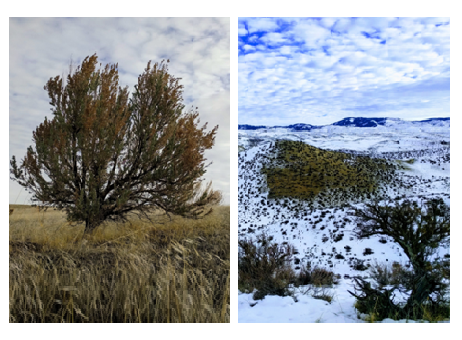
As human impact on nature grows, land managers need reliable methods to guide species conservation and ecological restoration in the face of global change. Sagebrush plants are disappearing from western landscapes, threatened by wildfires, invasive species, and urban growth. To curb the loss of this ecosystem, land managers have spent hundreds of millions of dollars to restore sagebrush populations across their historic range in the Great Basin.
Decades of land management history can help scientists understand human impacts on ecosystems. In collaboration with agency partners at the United States Geological Survey, the research team assembled a record of data on sagebrush plants, fire history, and restoration treatments spanning nearly 30 years. The researchers then applied mapping and mathematical models to distinguish the importance of wildfire and restoration from climate and topography.
Addressing the question of how human impacts have altered the distribution of sagebrush plants points the way for models and mapping to inform conservation of an imperiled habitat. The modeling approach provided by the researchers can be applied to help understand a range of ecosystems and species.
Idaho research highlights the threat that changing wildfire frequency poses to ecosystem health in the Western United States and shows that restoration action can have a positive impact on sagebrush ecosystems.
